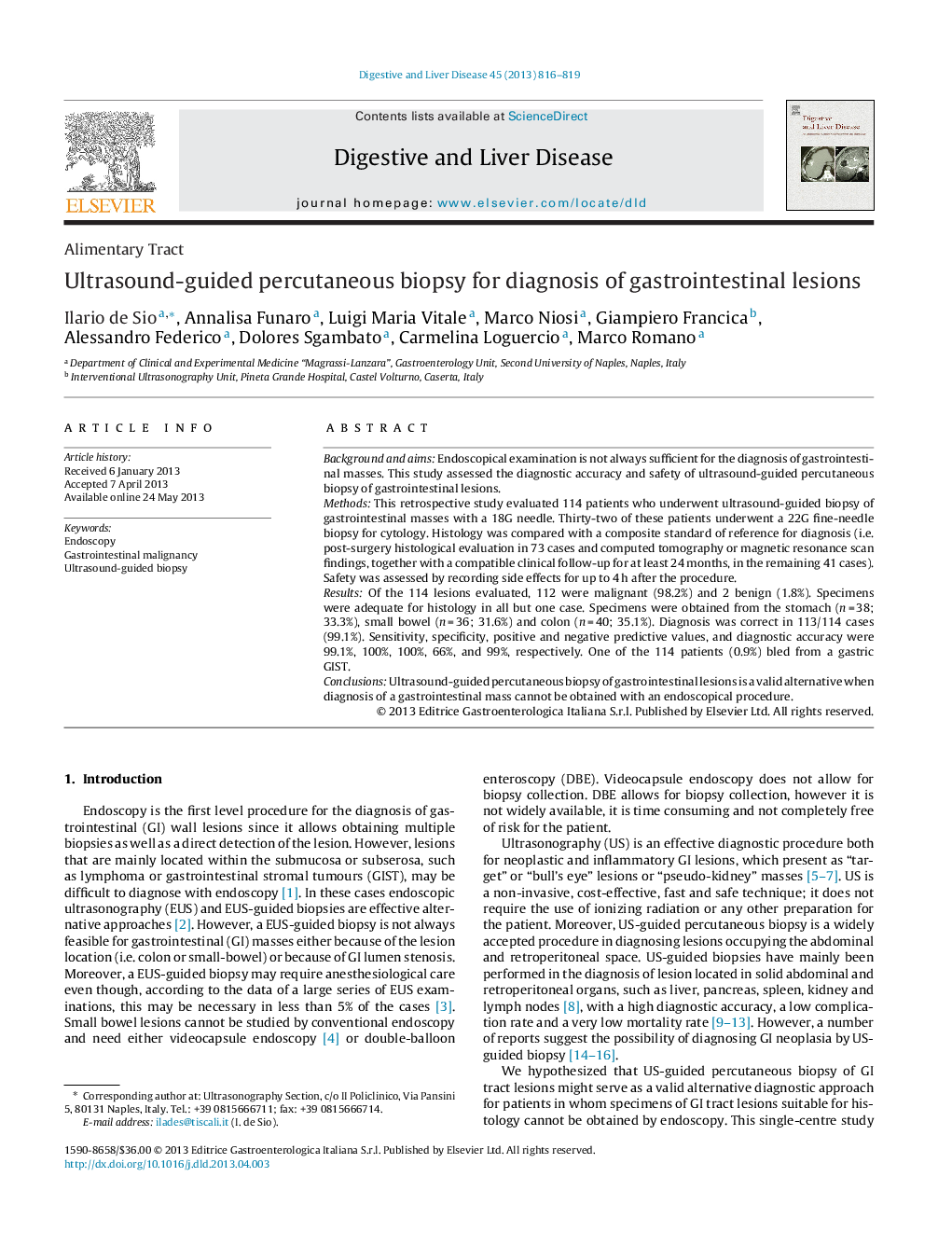| Article ID | Journal | Published Year | Pages | File Type |
|---|---|---|---|---|
| 3262331 | Digestive and Liver Disease | 2013 | 4 Pages |
Background and aimsEndoscopical examination is not always sufficient for the diagnosis of gastrointestinal masses. This study assessed the diagnostic accuracy and safety of ultrasound-guided percutaneous biopsy of gastrointestinal lesions.MethodsThis retrospective study evaluated 114 patients who underwent ultrasound-guided biopsy of gastrointestinal masses with a 18G needle. Thirty-two of these patients underwent a 22G fine-needle biopsy for cytology. Histology was compared with a composite standard of reference for diagnosis (i.e. post-surgery histological evaluation in 73 cases and computed tomography or magnetic resonance scan findings, together with a compatible clinical follow-up for at least 24 months, in the remaining 41 cases). Safety was assessed by recording side effects for up to 4 h after the procedure.ResultsOf the 114 lesions evaluated, 112 were malignant (98.2%) and 2 benign (1.8%). Specimens were adequate for histology in all but one case. Specimens were obtained from the stomach (n = 38; 33.3%), small bowel (n = 36; 31.6%) and colon (n = 40; 35.1%). Diagnosis was correct in 113/114 cases (99.1%). Sensitivity, specificity, positive and negative predictive values, and diagnostic accuracy were 99.1%, 100%, 100%, 66%, and 99%, respectively. One of the 114 patients (0.9%) bled from a gastric GIST.ConclusionsUltrasound-guided percutaneous biopsy of gastrointestinal lesions is a valid alternative when diagnosis of a gastrointestinal mass cannot be obtained with an endoscopical procedure.
